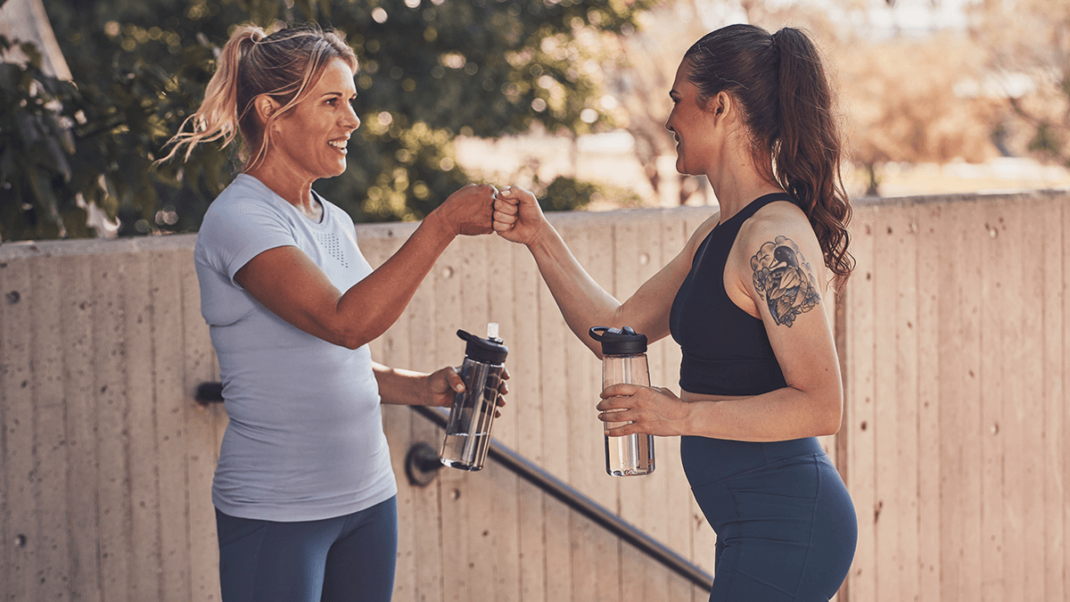Crafting Fitness Resumes
Cast off your panic and writer’s block. Fitness resumés are a whole new game.
Does the mere suggestion of writing a resumé send you into a nosedive? You are not alone! The gut-level fear of drafting resumés is so commonplace among professionals from every field that, as a resumé writer by profession, I’ve noticed that clients consider the experience as frightening and nerve-racking as speaking in public or undergoing extreme dental procedures. Is it possible to create a fitness resumé without experiencing stress at the top of the Richter scale? The information below should help you quell your tremors.
Benefits of Writing
a Great Resumé
The process of resumé writing can actually be a professionally productive and inspirational journey. A fitness resumé is a valuable “promotional” tool to help you achieve the success you desire. A resumé helps you get “from here to there” on the road map of your career goals. A well-written fitness resumé helps establish your credibility and reflects your competence and confidence in your field. A good resumé allows a positive reputation to precede you in the interviewing process and can actually guide the flow of your interview much like a script.
Most importantly, your fitness resumé, once comprehensively prepared, need only be updated for years to come to serve your needs. It can be transformed easily into a personal website, brochure, advertisement or flyer. It’s one of the best investments of time you can make to further your career.
Important Rules
The following are the only sacred truths about resumé writing, some of which might surprise you. Resumé protocol changed dramatically in the 1990s, becoming much simpler than in the past.
1. Be honest.
2. Maintain a consistency of format.
Do you want to write your resumé as a chronology of your experience, presenting it in a backward timeline, featuring your current experience first? Potential employers will assume that your current work reflects an increase in your abilities since you started your career. Working backward shows your progression.
Or do you want your fitness resumé to focus more on your skill sets, presenting the information in a functional format? Do you want to combine the two formats? No problem. Just remember to maintain consistency throughout the resumé. The sample resumé shown here is a “combination” resumé, showing groups of skill sets in a chronological order after a description of current experience.
Note: When you write your fitness resumé, investigate what your culture likes to see as a general format. Different countries have their own prescribed protocols for resumé presentation. Also, resumés may be more than one page. As long as your
resumé is an engaging read, it can fill as many pages as you need to describe your abilities. In fact, the norm for fitness professionals is three to five pages. That’s
because so many things go into being a fitness professional!
3. Print your resumé from your computer using an easy-to-read type style like Times Roman or Helvetica. Print your
resumé on good-quality business paper. Choose a color and a linen, laid, confetti or parchment finish. An office supply company or online paper store will have a selection for resumés.
Fitness Resumé Elements
The following elements need to appear within your fitness resumé, preferably in this order:
Who You Are and Where You Can
Be Found. Include your name, address, personal e-mail and/or website address,
personal phone numbers, cell phone numbers and pagers. It is not acceptable to list your current work phone number as a contact number, even if your employer knows you are looking. The exception to this is if you are seeking another position within your current company.
What You Do and Where You “Want to Go.” State your desired career path so that the reader understands what you would like to do with your experience. Communicate this fact right after your name and contact information. The resumé example presents an effective way to do this, using a title that describes what the person does and a statement explaining how she wants to use her experience toward her next career move. Then, she uses a headline called “Profile” and underneath gives a short statement of her qualifications.
The Details of Your Career. Include the what, when, where and hows, all summarized to the point. Include a concise presentation of accomplishments and activities, including
- employment experience
- achievements
- appointments and awards
- certifications
- affiliations
- media experience
- speaking/presentation experience
- continuing education and training
- education
You will see in the resumé sample how you can present your information concisely in either paragraph form or bullet points for quick review. The categories of experience described above do not apply to everyone, but they give you an idea of the kinds of things you can include. There is no right or wrong order for them.
You may place unpaid work—such as volunteer services, in-kind services, internships and extracurricular activities—within your employment experience section or in a separate section called “Community Service.”
Generally, put your education section at the end of your resumé because employers tend to look for your work experience first. The exception to this might be if you are a recent graduate of a school where your student achievements are important for landing your first job.
For your information, standard Amer-ican resumés no longer require you to write “References Furnished Upon Request” at the end.
Be Creative
When you write your fitness resumé, no matter what the format, the focus is on you. Shed your shyness about tooting your own horn. Boast and brag!
Also allow yourself to be creative when writing your resumé. After all, it is your ticket to securing a job interview. People have to read it. Why not give them a refreshing take on a customary tool? This is where the finesse of resumé writing comes in—the nuances that separate the neophytes from the pros. Bring your resumé to life with action, demonstration, analysis and results. Let it show strength,
certainty, observations, deductions and conclusions through the use of high-
impact/professional-caliber verbs. For example, use some of these impactful verbs:
facilitate, instruct, construct, teach, provide, manage, promote, design, enhance, inspire, relieve, orchestrate, research, profile, develop, integrate, organize, hire, coach, coordinate, create, sustain, maintain, foster, initiate, supervise, oversee, monitor, sell, improve, increase
These verbs can be used in past and present tense to actively describe your experience. They are key to the preparation of a professional presentation. Pair them with words and phrases that discuss meeting goals, monitoring performance, establishing standards, providing client services and supervising others. These verbs can paint an active and productive picture of your talents.
Alternative Styles
Do you live outside the United States or provide fitness services for academia, the military, security, government or medicine? In your case, your resumé may be called a “bio” or a “CV” (short for curriculum vitae). Use these additional pointers for crafting a bio or CV.
Bio Style. If you are self-employed and/or an active continuing education provider, you might choose to use the bio format. Bio is short for biography, and the format usually includes a narrative flow that is conversational and descriptive. It’s a presentation of your professional story and can be written like an essay. The accepted point of view is third person. Write as if your story is being told by another person.
It can be as engaging as you would like to make it. It can contain personal details that help you shape the story of your career, such as overcoming great odds; starting your career later in life after raising a family; or achieving something monumental, such as climbing a mountain. The focus is on telling an interesting story, while including specific data about your professional history and training.
Curriculum Vitae (CV). A CV also includes personal information such as birth date and place, social security number, driver’s license number, security clearances, military identities, all past workplace phone numbers and street addresses, marital status, number of children, and even the names of people with whom you have trained and the circumstances of your education and internships. Currently, for privacy and security reasons in America, a standard resumé does not include these facts. A CV can be written in chronological, functional or combination formats.
Create a Cover Letter
When you are satisfied with your resumé, write a good cover letter template you can adjust to accompany the resumé each time you mail or deliver it to a prospective employer or client. Your finished resumé will make the cover letter writing process a snap, as you pull out some highlights of your experience and tell a little bit more about yourself and what you are seeking. If you need help writing cover letters, read about them in the October 2004 issue of IDEA Fitness Journal.
Looking for a job in the fitness industry? Use the IDEA Job Board to find the perfect job for you. Want to post a job? Click here.





